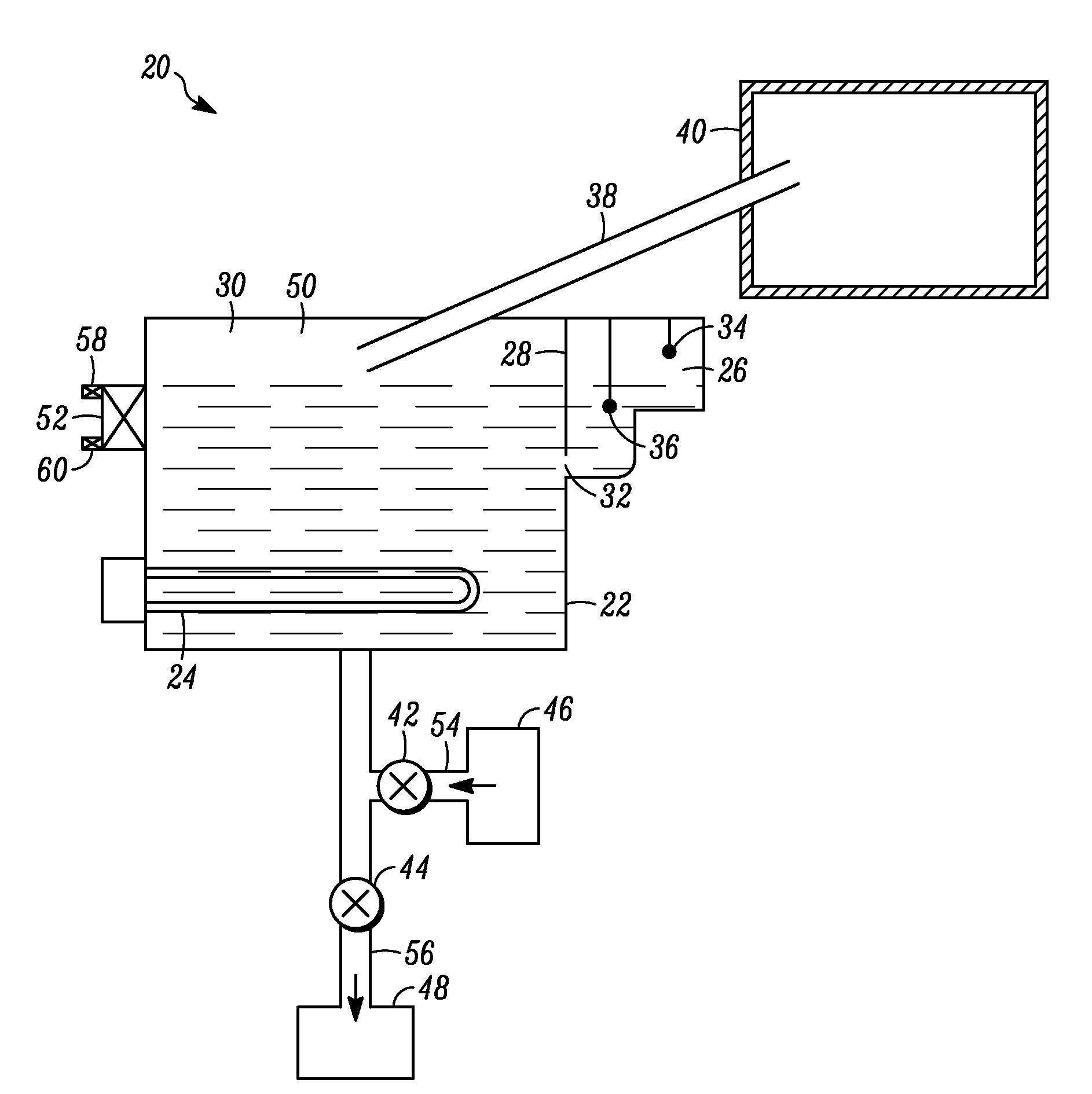Detection of deposits in steam humidifiers
a technology of humidifier and steam, which is applied in the direction of steam generation using steam absorption, combustion air/fuel air treatment, and boiler cleaning control devices, etc., can solve the problems of water damage to the structure, unhealthy conditions in the building, and liquid water within the duct can create a number of serious problems,
- Summary
- Abstract
- Description
- Claims
- Application Information
AI Technical Summary
Benefits of technology
Problems solved by technology
Method used
Image
Examples
Embodiment Construction
[0016]As described above, minerals, sediments, and other impurities present in water tend to deposit in the tank of a tank heater type humidifier over the course of its operation. These deposits can build up and cause damage and interfere with the proper functioning of the humidifier. However, the rate at which these deposits form depend on a number of variables, including the mineral content of the water (hardness) and the amount of time that the humidifier is operated. In some cases, it is recommended that the user of a humidifier disassemble and manually clean the tank and associated parts at a regular interval, such as every year. This strategy, however, fails to account for the variability in the rate at which deposits form, such that in some cases the tank is cleaned more often than it needs to be, and in others, the tank is not cleaned often enough and consequently the humidifier fails. This strategy also is dependent upon the user actually cleaning the tank, which in many ca...
PUM
| Property | Measurement | Unit |
|---|---|---|
| Time | aaaaa | aaaaa |
| Level | aaaaa | aaaaa |
| Threshold limit | aaaaa | aaaaa |
Abstract
Description
Claims
Application Information
 Login to View More
Login to View More - R&D
- Intellectual Property
- Life Sciences
- Materials
- Tech Scout
- Unparalleled Data Quality
- Higher Quality Content
- 60% Fewer Hallucinations
Browse by: Latest US Patents, China's latest patents, Technical Efficacy Thesaurus, Application Domain, Technology Topic, Popular Technical Reports.
© 2025 PatSnap. All rights reserved.Legal|Privacy policy|Modern Slavery Act Transparency Statement|Sitemap|About US| Contact US: help@patsnap.com



